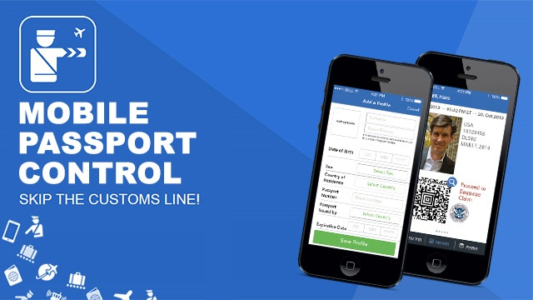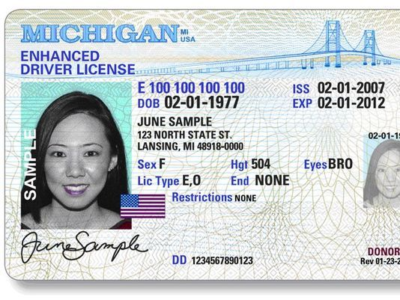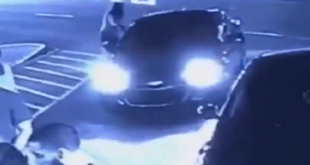In today’s day and age, we travel with both physical, as well as, electronic documents and financial instruments. This checklist and discussion should be a part of every Travel Security Program.
We have partnered with AlertsUSA.com who has created a simple, easy to use and comprehensive Travel Safety Checklist. In this piece, we begin the discussion around the various sections of this travel security checklist: Your travel documents and credentials.
Passports:
 Check your expiration date on that passport. In no case should you ever travel on a passport which is expiring within six months as many countries require at least six months of validity before they will permit you to enter their country. Additionally, if you are traveling with children, check make note of their passport expiration date. You all may have acquired your passport on the same date, but if one of your family is a minor under the age of 16, that passport is valid for only five years, not the ten years which apply to those over the age of 16.
Check your expiration date on that passport. In no case should you ever travel on a passport which is expiring within six months as many countries require at least six months of validity before they will permit you to enter their country. Additionally, if you are traveling with children, check make note of their passport expiration date. You all may have acquired your passport on the same date, but if one of your family is a minor under the age of 16, that passport is valid for only five years, not the ten years which apply to those over the age of 16.
Should you find that your passport will expire within six months of the completion of your trip, renew it ASAP.
For minors under 16, that renewal request must be made in person using form DS-11 (Department of State form 11). All others will use form DS-82.
If you lose your passport, as we detailed in our piece, “What happens when you forget your passport?” the embassy and consulate are there to assist. In 2017 the U.S. Department of State issued 54,471 emergency passports.
Visas:
Far too often travelers forget or simply are unaware that each country’s rules of entry vary. Travelers from the United States enjoy one of the widest selection of locations which they may travel without a visa requirement – but there remain many countries which require a visa, or visitor registration for citizens of the United States.
For example, Australia has an easy online process for U.S. visitors to register for short-term tourist or business travel. The process is relatively painless and can be concluded over the internet in a matter of minutes. The Electronic Travel Authority approval (or rejection) is issued within seconds of being requested.
Then there are the more time-consuming visa applications like those to China. You fill out the manual forms, then send it to the consulate which is geographically responsible for the area in which you are a resident. The consulate processes the visa and returns your passport to you. Often this processing can be completed using “visa service companies” or by you the traveler, in person, if you live in proximity.
Every time you plan to book foreign travel, check that country’s embassy’s website, specifically the Consular services to determine if you require a visa to visit or transit the country.
Trusted traveler credentials:
Global Entry - Global Entry is a U.S. Customs and Border Protection (CBP) program that allows expedited clearance for pre-approved, low-risk travelers upon arrival in the United States. Members enter the United States through automatic kiosks at select airports.
NEXUS – Nexus, also a U.S. Customs and Border Protection program allows pre-screened travelers expedited processing when entering the United States and Canada. Program members use dedicated processing lanes at designated northern border ports of entry, NEXUS kiosks when entering Canada by air and Global Entry kiosks when entering the United States via Canadian Preclearance airports. NEXUS members also receive expedited processing at marine reporting locations.
SENTRI - The Secure Electronic Network for Travelers Rapid Inspection (SENTRI) is a U.S. Customs and Border Protection (CBP) program that allows expedited clearance for pre-approved, low-risk travelers upon arrival in the United States. Participants may enter the United States by using dedicated primary lanes into the United States at Southern land border ports.
Travelers must be pre-approved for the SENTRI program. All applicants undergo a rigorous background check and in-person interview before enrollment
APEC BTC - The U.S. APEC Business Travel Card Program (ABTC) is a voluntary program to facilitate travel for U.S. citizens engaged in verified business in the APEC region and U.S. government officials engaged in APEC business.
Driver’s license / operating permit
Every country is different, so while your checking if a visa is required to visit your destination, you should also determine if you need to have an “International Driving Permit” (IDP) or if driving with a valid U.S. driver’s license is permitted in each country. While self-driving carries its own risks, doing so legally is one you can easily mitigate. Should you find you need one, the American Automobile Association (AAA) can assist you in obtaining the IDP. The fee is $20.
Similarly, it may be beneficial to determine if an “enhanced” driver’s license is available, as it can be used to cross into Mexico and Canada.
Copy your documents
The US Department of State recommends that the signature and data pages of your passport be photo copied, to assist in the issuance of an emergency passport. We agree.
Wallets and purses go missing – through forgetfulness or crime. My wife once left her purse on a chair in a café in South Africa, only to discover it missing some 45 mins later. A call to the café confirmed it was found, a quick roundtrip to retrieve, and 100% of the contents were in place. That is what is called being lucky.
Though all the documents were cataloged, it would have still been a bit of a chore to stop vacationing and begin protecting one’s identity and financial instruments.
So, do empty your wallet, billfold or purse and catalog what is inside and leave this with a trusted family member or friend for provision should you need it while in travel mode.
Traveling with Children
If the children are not your own, then you must carry documentation proving your right to accompany them (e.g. a consent letter or court order) and to allow them to be medically treated by a hospital. This point cannot be over emphasized.
Error on the side of too many consent letters (for travel and medical).
Nothing is less fun than showing up for the cruise or flight and being turned away because you lacked a consent form and the airline or cruise line had no choice but to deny you boarding.
The U.S. Customs and Border Protection provides additional guidance and exemplars of the documentation some countries may require.
Passport Control Mobile App
 This application enables U.S. citizens and Canadian visitors to expedite entry into the U.S. by submitting passport info & answers to CBP inspection-related questions prior to inspection.. We mentioned a number of trusted traveler programs, which require time and processing. This application you can put on your smartphone is one we strongly suggest you take the time to review and use.
This application enables U.S. citizens and Canadian visitors to expedite entry into the U.S. by submitting passport info & answers to CBP inspection-related questions prior to inspection.. We mentioned a number of trusted traveler programs, which require time and processing. This application you can put on your smartphone is one we strongly suggest you take the time to review and use.
Again, if you don’t want to participate in the other programs, participate in this one. It makes passing through immigration a breeze. Who doesn’t like picking up your luggage and then marching to the customs line … a huge time saver and frankly makes returning home less stressful, especially for those of us who hate lines.
Downloadable via Google Play or Apple’s iStore
NEXT: Travel Security Checklist - Destination Information
 Subscribe to AlertsUSA.com Homeland Security Threat and Incident Notification via Your Mobile Device. Normally $99 - now offered via our partnership with AlertsUSA.com for $75.
Subscribe to AlertsUSA.com Homeland Security Threat and Incident Notification via Your Mobile Device. Normally $99 - now offered via our partnership with AlertsUSA.com for $75.
 Securely Travel Travel Securely
Securely Travel Travel Securely








One comment
Pingback: Travel Security Checklist - Destination Information | Securely Travel